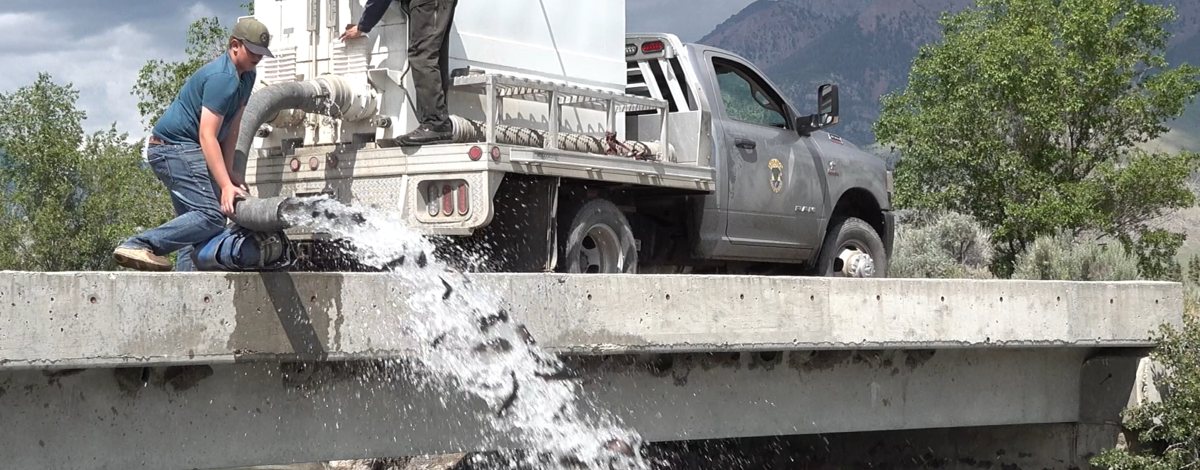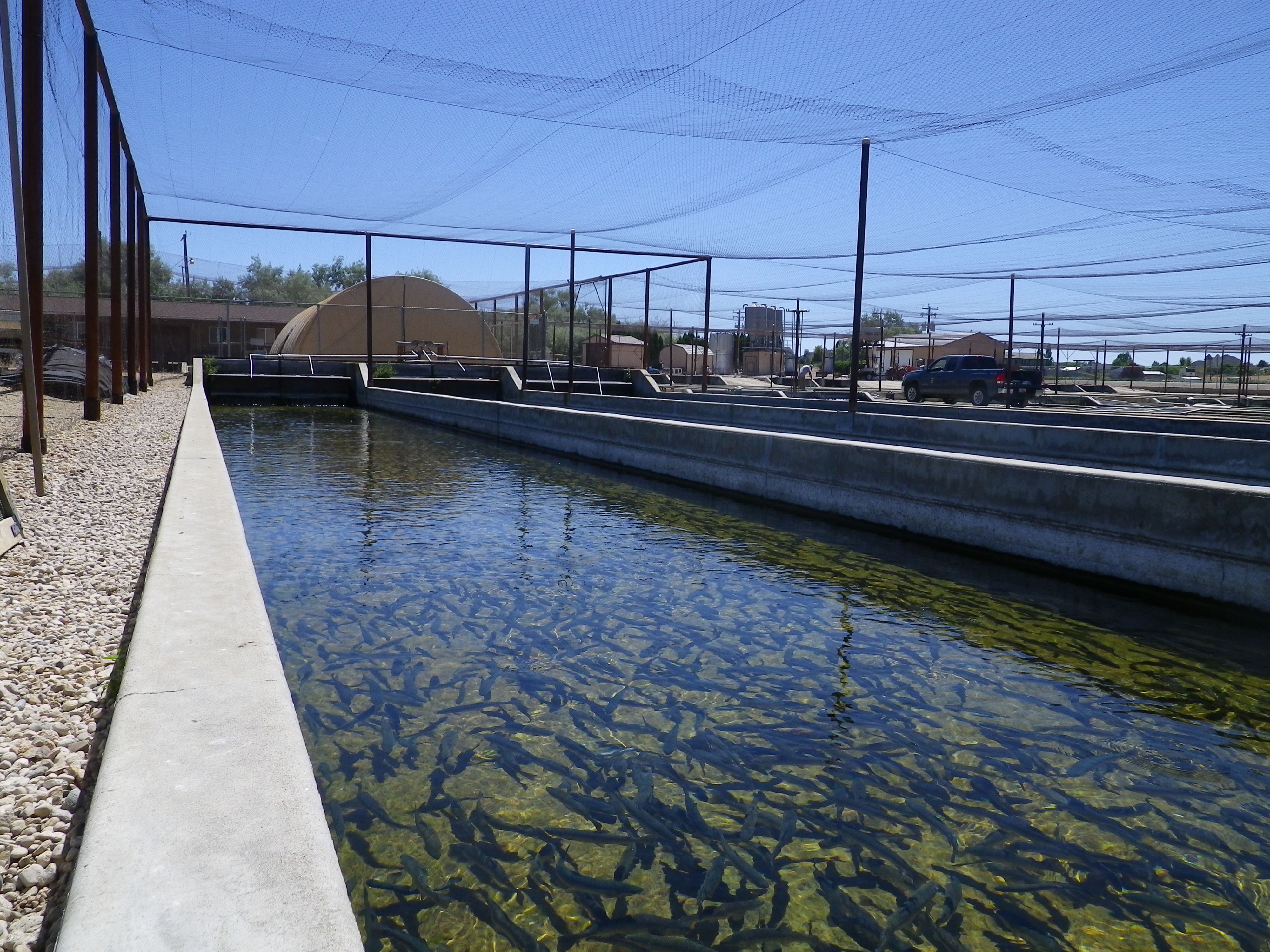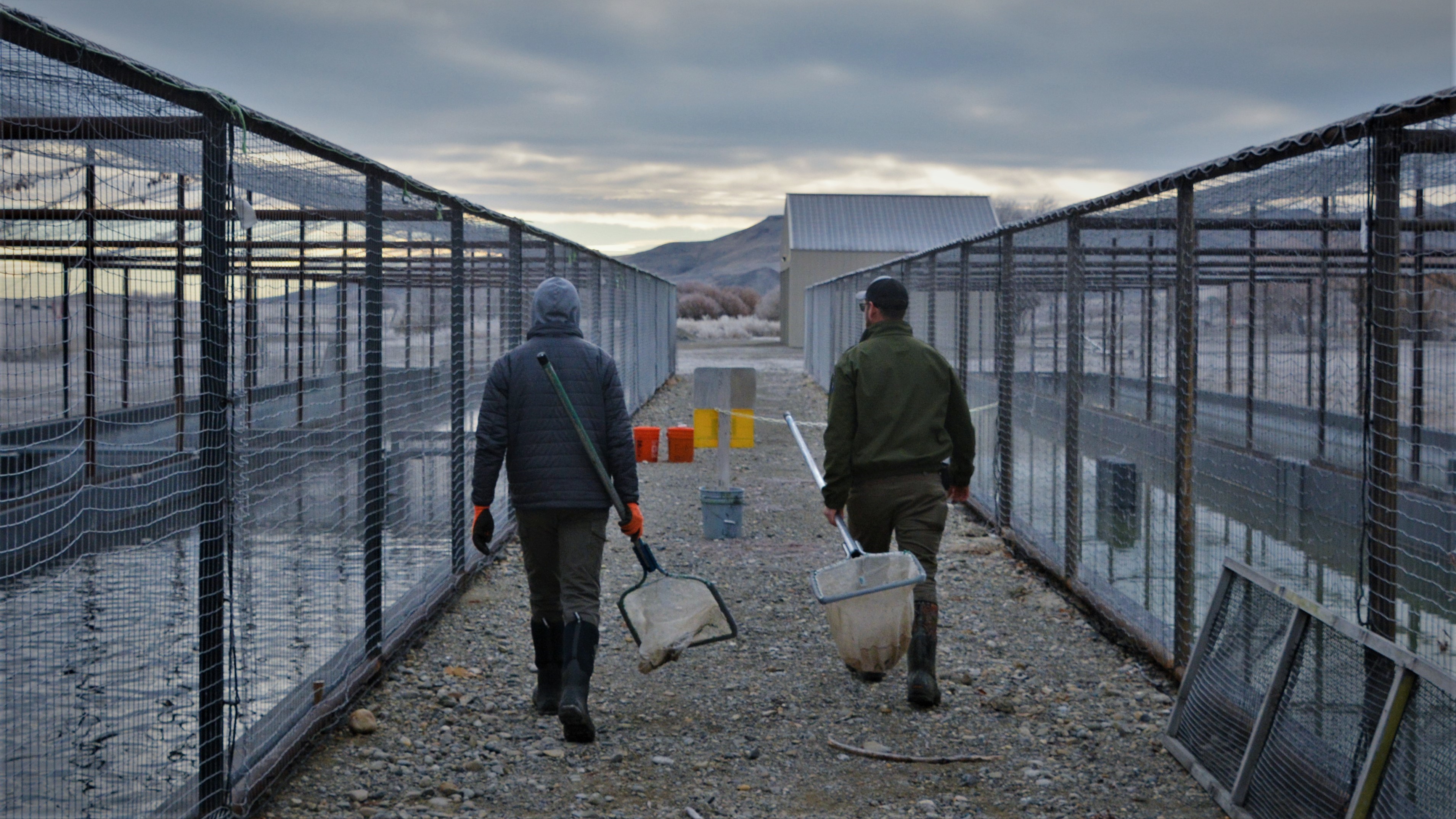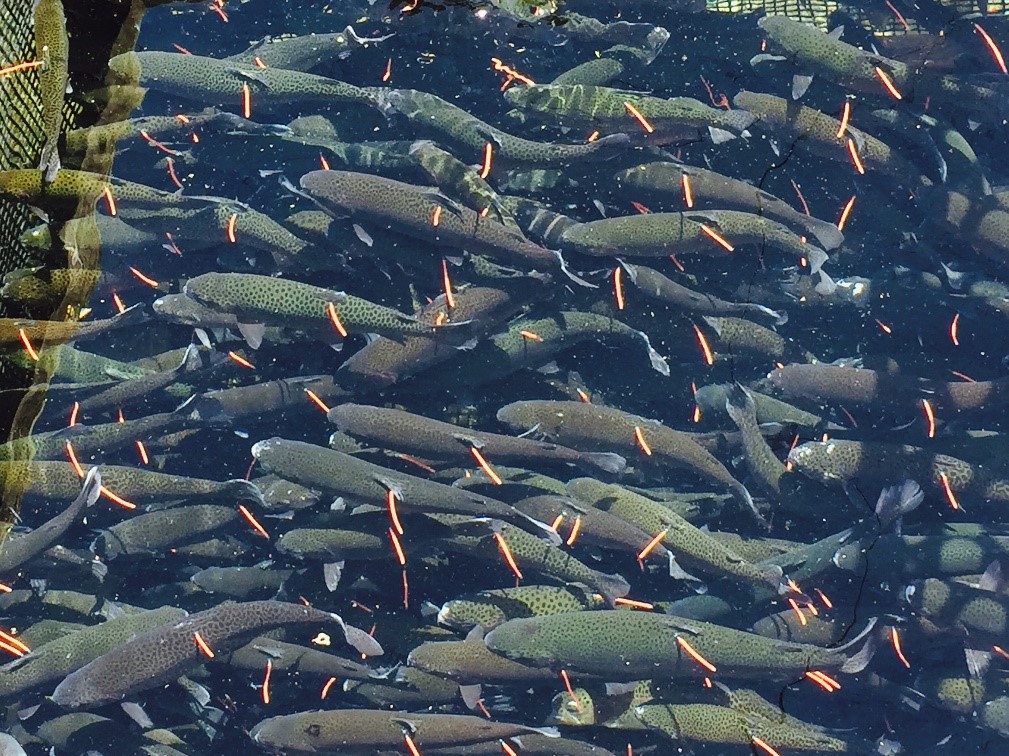Hatchery-raised trout are hugely important part of managing Idaho’s fisheries. They often provide instant fishing opportunity when stocked in Idaho’s lakes, reservoirs, ponds and streams, especially where natural populations or habitat can't meet fishing demand. Idaho's trout stocking program includes 10 hatcheries and raise over 17 million fish annually, with more about 1.5 million being "catchable" sized rainbow trout.
Since raising and stocking hatchery trout Is expensive, Fish and Game biologists have put a lot of effort into improving the stocking program. In recent years, biologists have been trying to answer "Is bigger always better?" This combination of studies investigated whether stocking larger trout might benefit anglers, and whether it would be cost effective.
The results were surprising, and earned Idaho recognition from the American Fisheries Society, which gave Idaho Fish and Game biologists its 2023 Outstanding Projects Award for fisheries research and surveys.




